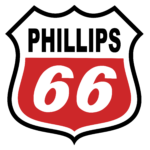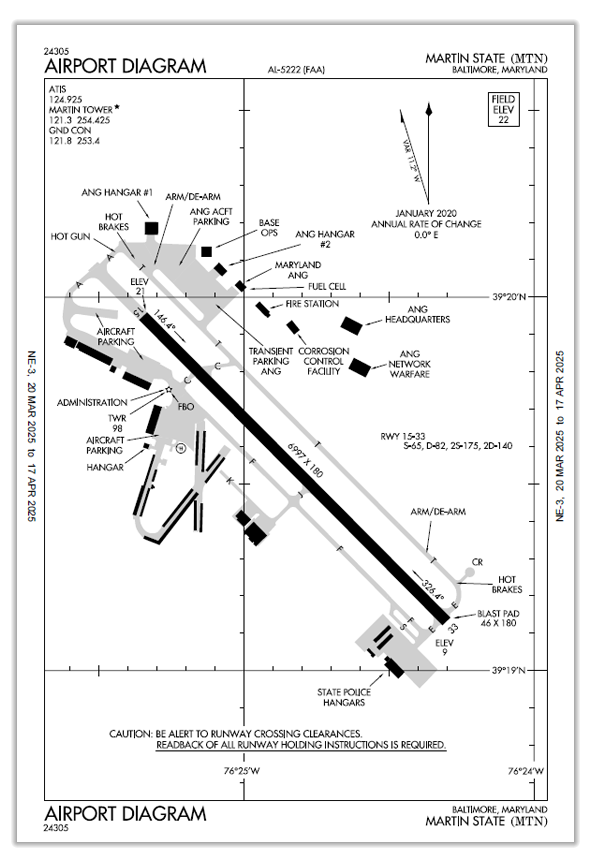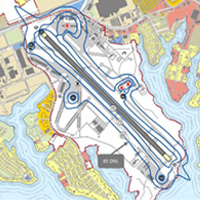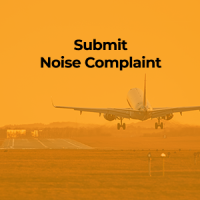Noise abatement procedures are voluntary and designed to minimize exposure of residential areas to aircraft noise, while ensuring safety of flight operations. There are communities surrounding the airport which are noise sensitive. We want to minimize the noise impacts on these communities.
The Martin State Airport (MTN) Noise Abatement Plan (NAP) is formulated to minimize noise disturbance to neighboring communities while maintaining safe and efficient MTN Airport operations. The MDOT MAA Division of MTN Airport Operations is responsible for the overall administration of the MTN NAP.
Per the Code of Maryland Regulations (COMAR) Section 11.03.02.10C(3)(b), the Maryland Air National Guard, the Maryland State Police, and local law enforcement agencies are exempt from the provisions of this regulation when operational necessity dictates noncompliance, or in the event of a State or national emergency.
The measures described herein are intended for noise abatement procedures and are subject to air traffic control (ATC) and pilot discretion for reasons of safety.
MTN Noise Abatement Procedures
A) Visual Flight Rules (VFR) and Instrument Flight Rules (IFR) Departures
- VFR Piston-engine Aircraft:
Runway 15/33 – Unless otherwise instructed by Air Traffic Control (ATC), aircraft fly runway heading to 1000’ Mean Sea Level (MSL) prior to turning to the ATC approved on-course heading or crosswind leg of the traffic pattern. - VFR Turbine Powered Aircraft:
Runway 15/33 – Unless otherwise instructed by ATC, aircraft shall fly runway heading to 1,500’ MSL prior to turning to the ATC approved, on-course heading or crosswind leg of the traffic pattern. - VFR Helicopter Departures:
Unless operating under a Letter of Agreement (LOA) with MTN ATC specifying otherwise, helicopters shall climb to 500’ AGL on initial departure heading before turning on-course. - All IFR Departures
IFR departures shall be accomplished in accordance with ATC direction or clearance.
- VFR Piston-engine Aircraft:
B) VFR and IFR Arrivals and Traffic Patterns
VFR and IFR aircraft approach should, to the maximum extent feasible, maintain the highest practical altitude, commensurate with flight and ATC procedures in order to minimize aircraft noise exposure to communities underlying the final approach courses.
C) Closed Traffic Patterns
A left-hand traffic pattern shall be used at MTN unless otherwise directed by ATC. Piston fixed-wing aircraft should fly runway heading until reaching 1,000’ MSL prior to turning to the crosswind leg of the traffic pattern. Turbine aircraft should fly runway heading until reaching 1,500’MSL prior to turning to the crosswind leg of the traffic pattern.
Traffic Pattern Altitudes
D) Touch-and-Go or Practice Approaches
No touch-and-go and/or practice approaches or practice landings are permitted between 10:00 p.m. to 6:00 a.m. daily unless approved by MTN Operations and Maintenance staff.
(Between 6:00 a.m. – 10:00 p.m. Daily)
* Military aircraft shall be limited to two practice landings/take-offs or approaches unless additional operations are approved by MTN Operations and Maintenance staff. FAA Aircraft Weight Class – https://aspm.faa.gov/aspmhelp/index/Weight_Class.html
E) Aircraft Maintenance Engine Run-up Areas
Aircraft maintenance engine run-ups are to be accomplished only in areas designated by the Chief, MTN Operations & Maintenance in accordance with MTN Tenant Directive 200.2.
Resources
- 2020 Martin State Airport – Airport Noise Zone Update (Full document and Appendices)
- 2020 Martin State Airport – Executive Summary
- 2020 Martin State Airport – Airport Noise Zone Update (Main body)
- 2020 Martin State Airport – Airport Noise Zone Update (Appendices)
- 2020 Martin State Airport ANZ Tax Map Grid and ANZ with Tax Maps
- SAC Meeting #1 Presentation, September 11, 2019
- SAC Meeting #2 Presentation, January 7, 2020
If you were unable to attend the Public Hearing and wish to provide comments on the study, written statements may be submitted to Mr. Bruce Rineer at BRineer@bwiairport.com until February 16, 2021. If you have any additional questions or comments regarding the ANZ Update, please contact Mr. Bruce Rineer at BRineer@bwiairport.com.




